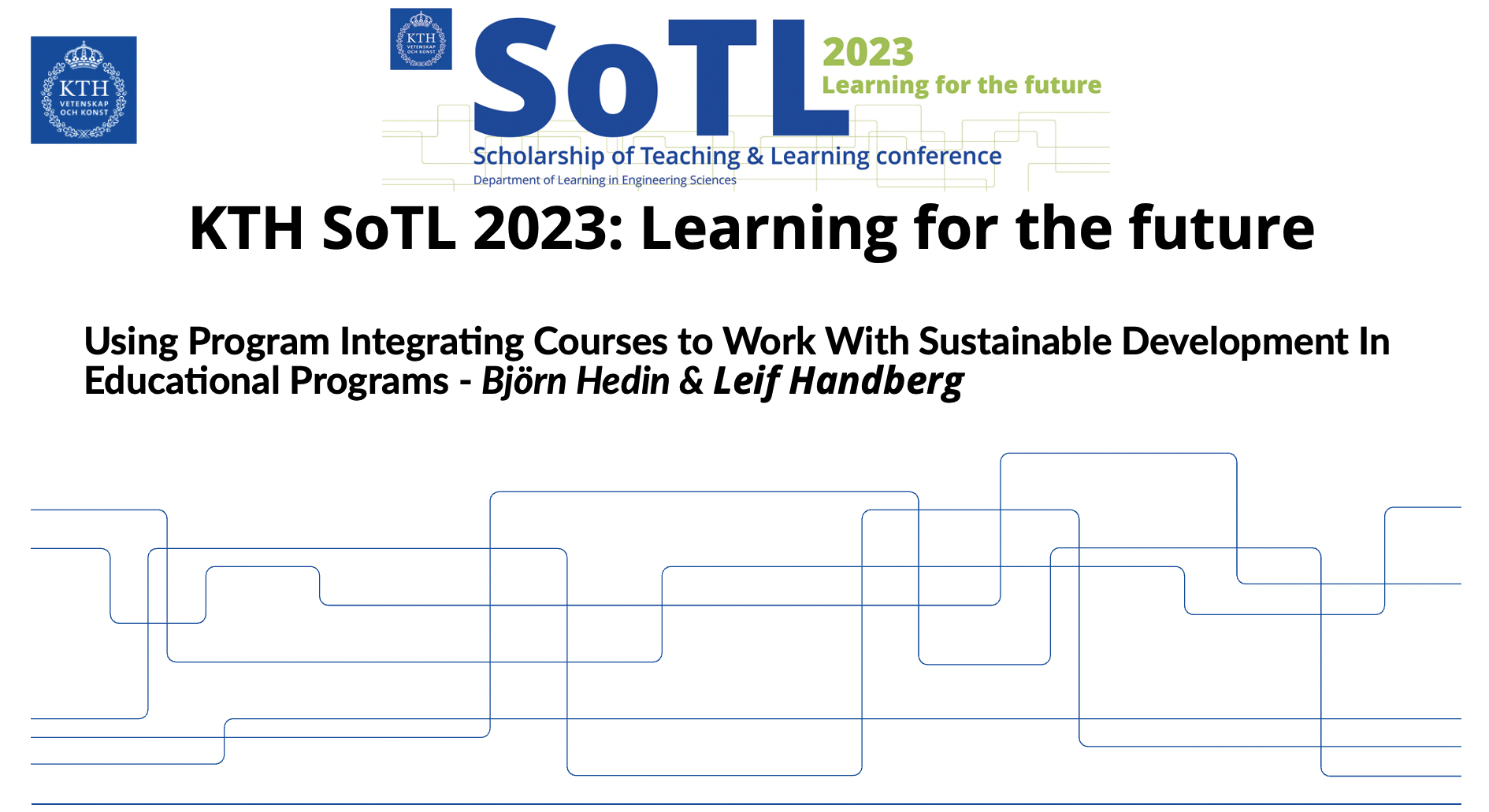P5 Using Program Integrating Courses to Work With Sustainable Development In Educational Programs
Background and purpose
Integrating sustainable development in educational programmes can be challenging. Most subject teachers are not specialist in sustainable development, and can be uncomfortable to teach sustainability related topics in their courses. Furthermore, there can be a lack of coordination between teachers, and some topics can overlap while other potentially relevant topics are not covered at all.
In this paper we present how we have worked with integrating sustainable development in courses in the media technology program at KTH Royal Institute of Technology in Stockholm, Sweden, using a “program integrating course”.
Program integrating courses are special courses intended to provide a program perspective on an educational program [1]. Such a course runs at low intensity over the first three years of the program. After each of the four periods over the academic year, among other things, students write a structured reflection about the courses they have studied, and then meet in small cross-cohort groups of around 10 students and together with a teacher discuss the courses they have studied.
There are several benefits of program integrated courses. Kann [2] has reported the following functions
- Provide an academic introduction to the program and university studies
- Provide understanding of the program
- Create contacts between teachers and technologists
- Stimulate the exchange of experiences between the grades
- Provide training in written and oral presentation and reflection
- Pick up what other courses miss
- Inform about course and specialization choices, including exchange studies
- Follow up study results
- Train the teachers participating in the program
- Evaluate the program and contribute to quality development
To this list we in this paper add another function that is to continuously work with adding a sustainability perspective on the courses in the program.
Finished work/ongoing work
In the beginning of the first year, the students have a special seminar introducing sustainable development from a subject perspective. Among other things, they read about and discuss the 17 UN sustainlable development goals. This provides an introduction to the topic.
Next, during each of the following 12 periods spread out over three years, the students reflect upon if they can find any connections to the 17 sustainable development goals they studied during the first period, and if they find any connections write a few sentences about this in their course reflections. This provides an opportunity both for repeating the module about sustainable development, and for reflecting on how the courses touch upon sustainable development. These texts are also read by the teacher mentor and other students in the group, which exposes these students to possible other angles of sustainability aspects in the courses.
The next step, which we have done occasionally but intend to do more structured in the future, is to collect all reflections from each course and (with permission from the students) give the main teacher of each course the option to read these reflections. This provides the teacher with a unique opportunity to see how the students perceive the course, and to see if and how the students have made any connections to sustainable development. The reflections are also provided to the course management, and can serve as input when the course management has discussions with course responsible teachers about the development of their courses.
Results/observations/lessons learned
The use of program integrating courses to provide an opportunity for students to reflect upon sustainability aspects in their courses in a structured way, and to discuss this with other students and teachers has proven to be a useful method to keep the topic of sustainability alive during the educational program. The opportunity for teachers to see the students’ views on how sustainability is or is not integrated in their courses has in at least one instance led to the teacher putting more emphasis on sustainability in their course. The feedback to the program management has proven useful to get an overall picture of how sustainability is actually implemented in the program and to identify possible overlaps, and to have discussions with teachers about new possibilities to integrate sustainable development. It is however important to emphasize that not all courses are required to integrate sustainability if there is not a natural connection.
Take-home message
The main take-home message is that program integrating courses can be a good tool for students, teachers and program management to work with sustainability in a program.
References
- Hedin, B. Program integrating course: A tool for reflection and quality management. In Proceedings of 2: A Utvecklingskonferensen för Sveriges Ingenjörsutbildningar; Lund University: Lund, Sweden, 2009.
Kann, Viggo. "En programsammanhållande kurs med många funktioner." Proceedings of 3: e Utvecklingskonferensen för Sveriges ingenjörsutbildningar, 2

